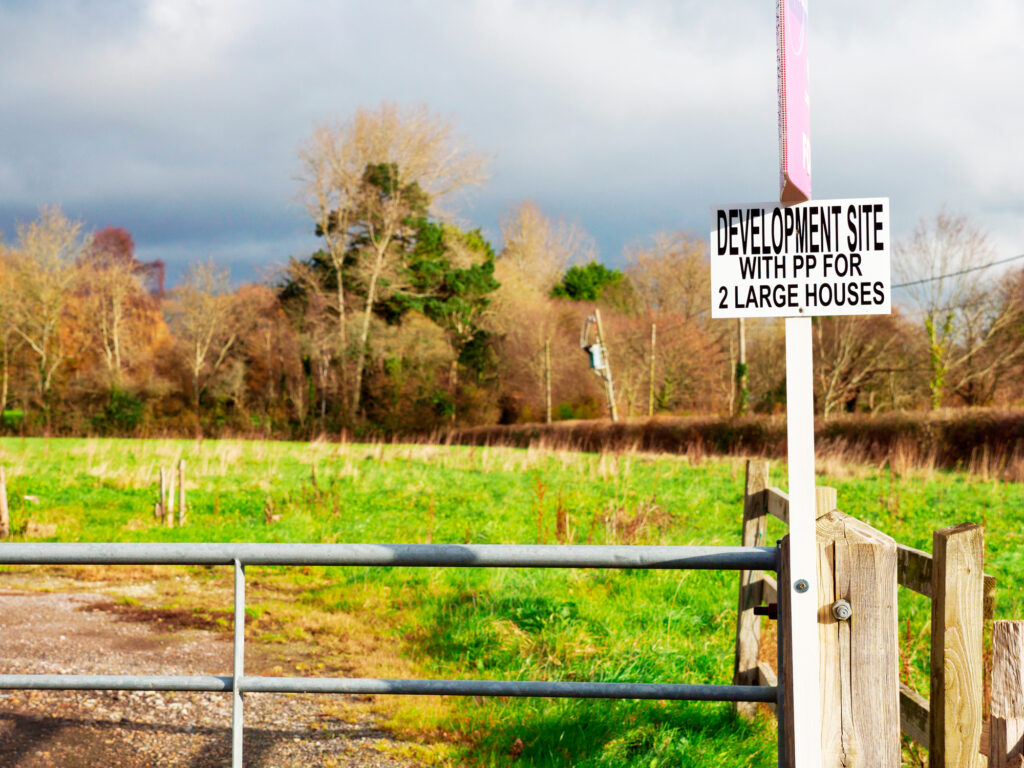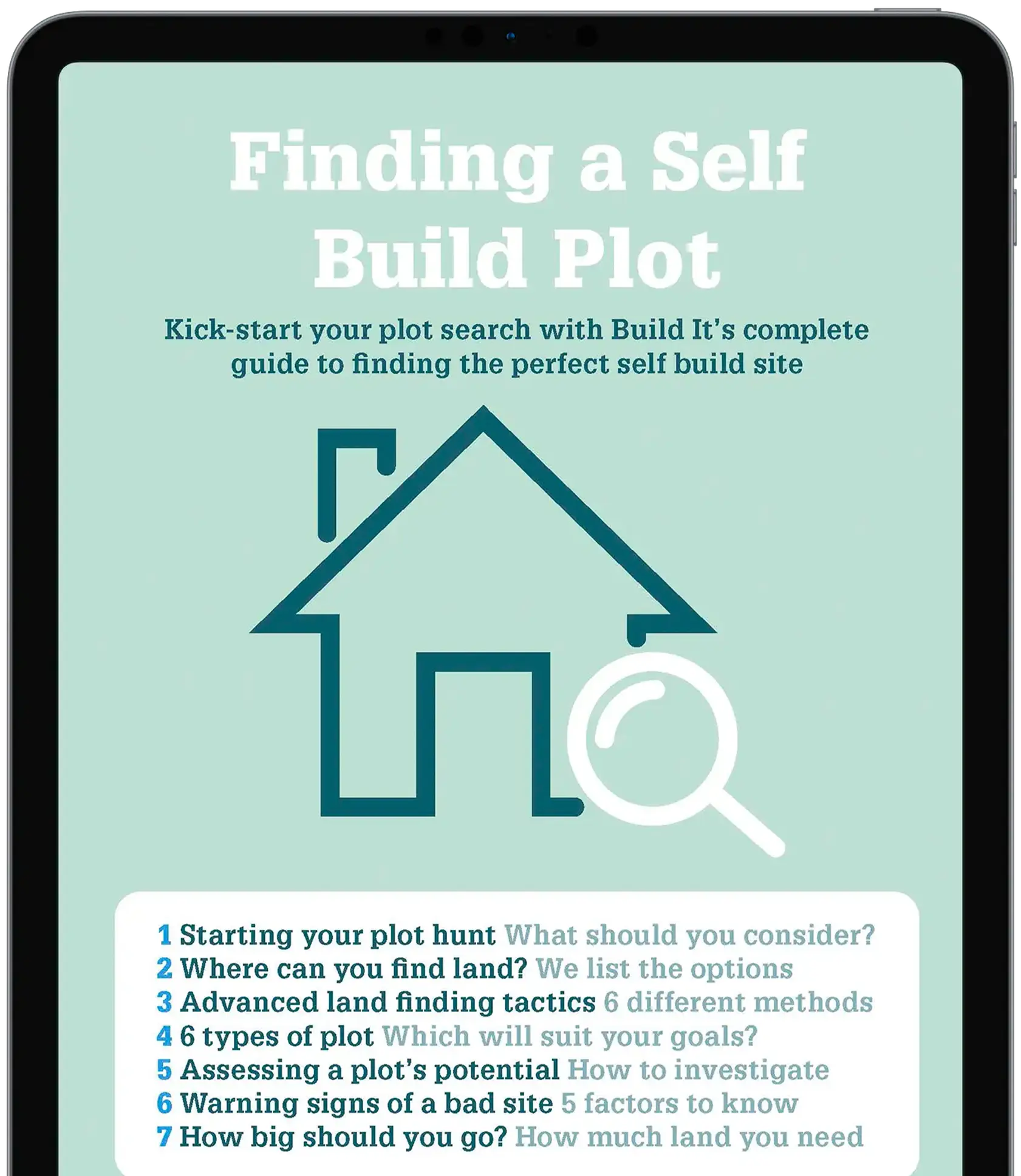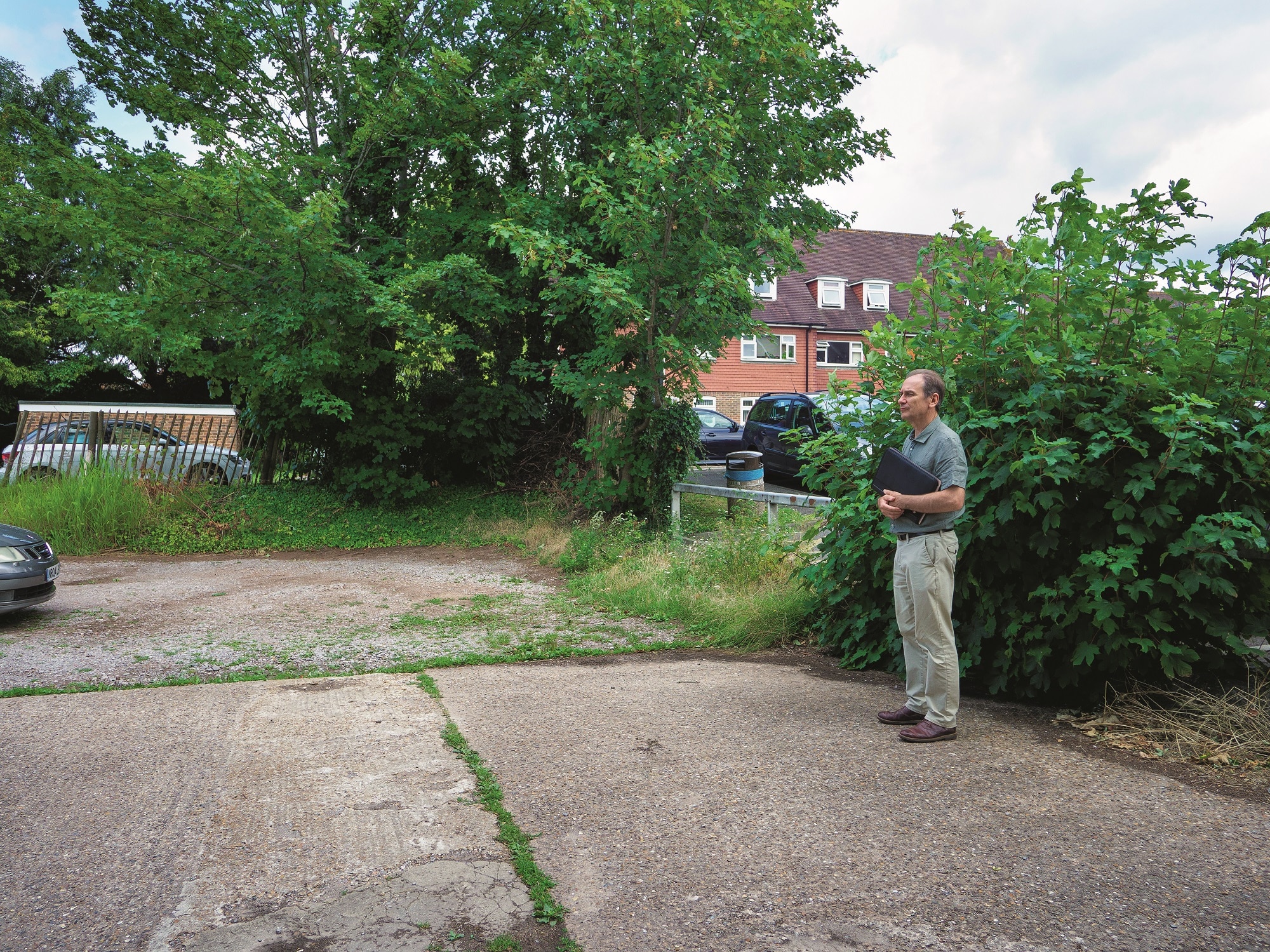
Use code BUILD for 20% off
Book here!
Use code BUILD for 20% off
Book here!The market for plots is very competitive – mostly because the appetite for self build far outweighs the availability of viable, permissioned land to build on. Finding a good building plot quickly can therefore be challenging, but it is possible to improve your chances of success!
The National Custom and Self Build Association (NaCSBA) believes around 100,000 people aim to either buy a building plot, obtain planning consent or start their projects on site in the coming year.
But the reality is that only 13,000 managed to create a bespoke home in 2018 (so under 15% of those 100,000 people with serious self build ambitions). One of the key obstacles is securing a viable patch of land. Here’s how you can make your plot search swifter and easier.
In England and Wales, over 90% of land is subject to some kind of legal designation that means it can’t be built on.
In a typical south-eastern county, for example, you might find that only 5-6% of the land has actually been developed in some way. Of that, only a fraction will be for housing – with the rest for industry, schools, infrastructure, retail etc.
Planning policy generally reinforces those boundaries. So while you might drive down a country lane and see loads of land that looks ripe for development, in fact the majority of it can’t be built on. Most self builders looking for individual plots therefore end up pegged into zones that have had some kind of development already.
PlotBrowser.com – the quickest route to finding a genuine building plotThe latest addition to Build It’s series of powerful project tools, PlotBrowser.com is your dedicated self build land resource. You’ll find 1,000s of plots and properties to view nationwide, all with outline or full planning permission in place – including the council planning reference so you can understand whether the plot can support the kind of house you’d like to create. |
Add in challenges such as Nimbyism (you can’t build near me!) and planning complications, and opportunities for genuine building land become even more limited.
Put that all together, and supply-and-demand means any good plots that do come up in prime locations tend to get sold for high prices – and they’re snapped up fast.
What does that all mean? Well, if you’re going to beat the scrum and give yourself the best opportunity to find a decent building plot, you need to pursue both traditional routes and explore off-market options.

Potton (www.potton.co.uk) design and build clients the Papworths found their plot at auction This can be a swift route, with a definitive date for the sale, but you need to research sites thoroughly in advance and can expect significant competition for the very best plots
A great starting point for any plot search is PlotBrowser.com, Build It’s online self build land resource. With PlotBrowser, a lot of the upfront work is done for you. The dedicated team ensures only genuine plots with planning permission are listed, meaning you can gain confidence that you’re looking at a viable opportunity.
The personal approach is also a strong option. Explore areas you’re interested in, and talk to locals and landowners about the fact you’re keen to join the community. Word of mouth can be the best option to snag a plot before it goes on the open market. For more tips check out our Complete Guide to Finding a Plot.
Premium Content
Not sure where to start with your plot search? Kick-start the journey with Build It’s complete downloadable e-guide to finding the perfect self build site. Click below to find out more.
find out more
Lots of people get fixated on creating their dream house, with the ideal vista and room arrangement; so much so that the chance of finding a plot that fits that vision becomes a one-in-a-million shot.
Being able to compromise a little will help open up more of the market. There’s no point rigidly sticking to the idea of creating a stone cottage if the area you’re looking at is predominantly full of red-brick houses.
Learn more: Self Build Plot Assessment Checklist
Instead, try to keep in mind the wider reasons you want to self build and how those ambitions could be moulded according to the plot and/or its location.
If you’re going to put yourself ahead of the curve, you also need to develop a good understanding of the true value of a site with genuine self build potential.
If you played the ‘guess the plot price’ game, most of us would probably pitch low and find the site actually goes for more, because someone out there is willing to put their hands a bit deeper into their pockets.
The trouble there is that you might find the budget you’ve set aside isn’t sufficient to get a big enough plot in the right location to support your ambitions.
Unrealistic expectations can lead to disappointment. So, the best first step you can take to unlocking more plots is to be prepared to compromise.
That doesn’t mean giving up on your dreams, but instead it’s about managing the nice-to-haves and the must-haves so you’ve got a framework for moving your project forward.
For instance, you might need an open-plan living space, four bedrooms and a big garden. This could inform the kind of plot size that would be suitable for your ambitions. Similarly, if a great vista is crucial, you can rule out a lot of sites at a very early stage.
One of the biggest issues you’ll face when a plot comes up is indecisiveness. Most self builders are new to this game, and it can be a challenge to get over the line and make that commitment to buy.
Can you really build what you want on the plot? What’s it actually worth? What if you need to change the planning consent? As you start to stutter, so the seller – who won’t have a shortage of buyers – becomes more likely to turn to someone who’s more confident in moving forward, and you miss out.
Learn more: How to Value a Building Plot
Secondly, you’re probably looking in the same places as everyone else – Rightmove and Zoopla, for instance. They’re useful tools designed to make the process easier, which is great, but as a result you’re likely to encounter stiff competition and high the prices.
Ask yourself, too, if a patch land has been up for sale on a plot finding database for a long time, why is that? Is there a problem with it, such as access issues or covenants, or is it simply overpriced?
At the point you’re getting serious about your plot search, you’ll need to make sure your finances are sorted. If you need a mortgage, then just as with a house purchase on the open market, it’s vital to have an offer in place from a lender. Without this, you won’t be able to move as quickly as your competitors and you’re likely to miss out.

This piece of land looks like an ideal building plot but for one complication: it’s currently used for car parking. The fact that a handful of vehicles park on it during the day could prove troublesome in a town centre location, where this service is likely to be at a premium – unless the usage doesn’t currently have planning. This is where research and due diligence can pay dividends
The first thing to think about is where you want to build, and that should really be more granular than simply identifying a county.
If you’re going to be able to do your research properly and put yourself in the best position
to take a plot forward, try to identify particular towns, villages and suburbs you’d be happy to live in.
With this kind of focus, you’ll be able to make time to gain a deeper understanding of what’s going on in that local market. What kind of projects are being granted permission, for instance, and would something similar meet your goals? Does the council seem pro-development?
Where is the settlement boundary? What kind of prices are plots going for? Without this focus you can end up missing the detail, which could lead you to miss an opportunity or – perhaps worse – buy a plot you wish you hadn’t!
You should also look into planning policy – both on a national and local level – as this will help you to understand what might be possible to build on a particular plot.
You don’t need to turn yourself into a planning expert (you can lean on professional planning consultants, architects and package companies for detailed guidance), but this will help you refine your search.
In particular, look at council’s Local Plans for anything supportive of self build, pockets of development areas that might suit you and where the settlement boundaries are (if a site’s outside of this and doesn’t have some kind of planning consent, it probably isn’t a plot at all).
It’s always a good idea to arm yourself with the tools that will help you appraise a plot’s suitability, so you can move quickly when the time comes.
For instance, you can lean on package companies like Potton for their Ideas Books, which are full of houses to give you a sense of what designs you’re keen on. This can be great for understanding how a site might support the kind of home you want.
Build It’s interactive Self Build Cost Calculator is another great example. This gives you quick-fire estimates that can help you get an initial sense of construction costs and therefore what budget you have left over for the plot. If you have an unrealistically low budget, you will face a long wait to find viable land.
Attendees to Build It’s Virtual Training Course on Finding Land & Assessing a Plot’s Potential gain access to a Plot Valuation Tool, which can calculate a value based on the parameters you input into the spreadsheet.
There’s also an excellent book, How to Find and Buy a Building Plot, by Roy Speer and Build It expert Mike Dade. These guys are planning professionals, so their guidance is well worth its weight in gold.
Need more advice about different aspects of your project?Build It’s Self Build Virtual Training will give you the detailed know-how to successfully realise your dream home. Our interactive courses are presented by Build It’s expert contributors and designed to give you the key nuggets of knowledge you need – all from the comfort of your own home. Covering everything from finding land to planning permission and design, our courses take place online and allow for audience participation and experience sharing. Use the code TWENTY for 20% off. |

